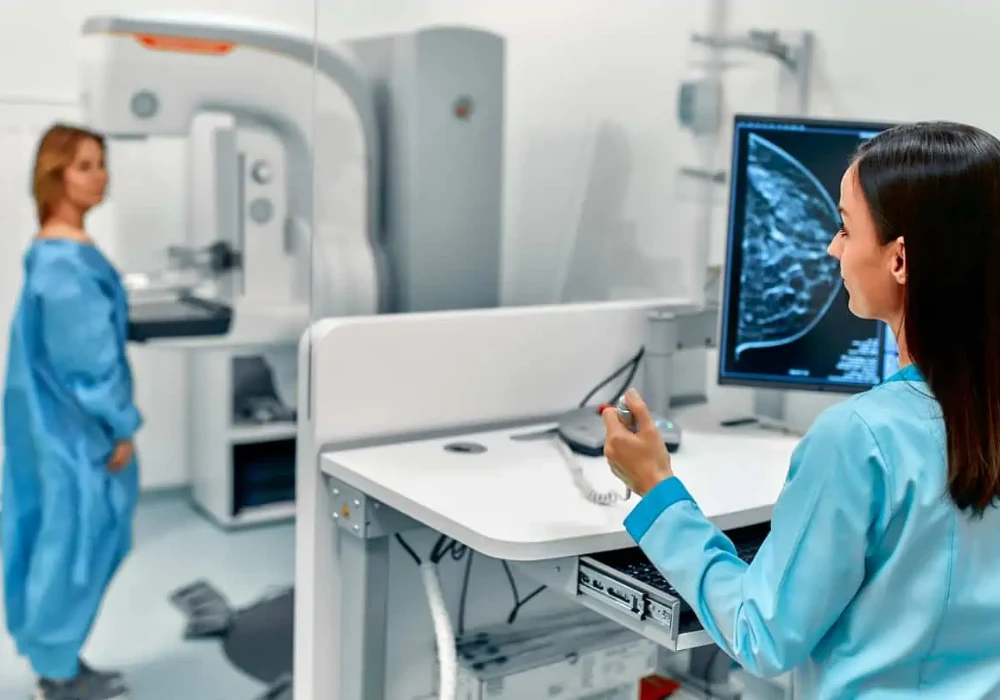Contrast-enhanced mammography and dedicated breast CT add functional detail to structural images by using iodine-based contrast to highlight tumour blood supply. These techniques draw on decades of experience with intravenous contrast in general imaging but apply it to largely outpatient pathways. Safety guidance is well established and can be adapted to busy breast services without slowing care. A focused approach to screening, clear plans for handling reactions and thoughtful use of kidney checks help teams keep patients safe while avoiding unnecessary tests. The aim is practical: identify those who are more likely to run into trouble, support them with simple measures and allow everyone else to proceed smoothly.
Recognising and Managing Reactions
Most people tolerate iodinated contrast well. When reactions happen, they fall into two broad patterns: those that occur quickly after injection and those that appear later. The fast reactions range from mild symptoms that settle with simple treatment to rarer events that need urgent care. The slower reactions, which can appear after leaving the department, are usually skin-related and tend to resolve with supportive management.
Must Read: Reimbursement Gaps in Contrast-Enhanced Mammography
The strongest warning sign for a future reaction is a previous problem with the same type of contrast. Other general allergies are less useful as predictors, though active asthma, chronic urticaria, a history of anaphylaxis or systemic mastocytosis deserve attention. Because records are not always complete, brief pre-scan questions help to surface the essentials: any past reaction to contrast, recent flare-ups of asthma or urticaria, any history of severe allergic events and known mastocytosis.
Observation after injection is an important safety net. Even mild symptoms merit a short period of monitoring because problems can evolve. When more serious features appear, treatment should follow established pathways, including intramuscular adrenaline where appropriate. Premedication has a limited role. It is not routinely needed for those with mild previous reactions. When time allows, switching to a different iodinated agent or choosing an alternative guided by allergy testing is more reliable. After a severe prior event, a contrast-free option should be considered if it can answer the clinical question.
Protecting Kidney Health with Selective Checks
Concerns about kidneys focus on a rise in creatinine within a few days of contrast exposure. The risk is closely linked to baseline kidney function rather than the setting or the contrast route. People with advanced impairment are more likely to develop problems, while those with moderate function generally face low risk with intravenous use. Breast imaging typically involves outpatients who carry fewer acute illnesses than emergency or inpatient groups, which further reduces the likelihood of kidney complications.
Because the highest risk is concentrated in a small subgroup, targeted screening makes sense. Short questionnaires can identify who needs a recent eGFR and who can safely proceed without blood tests. This approach maintains safety, shortens pathways and reduces costs by avoiding routine laboratory checks in low-risk patients. Finger-stick point-of-care creatinine has been explored but has not shown reliable performance for recall clinics, so it should not replace standard laboratory testing when kidney assessment is necessary.
When significant impairment is present, hydration matters. If contrast is still required, guideline-based intravenous fluids before and after the scan can lower risk. Where imaging without iodinated contrast would answer the clinical question, that route should be weighed, especially in those with very low eGFR or rapidly worsening function. The key is to plan ahead so that vulnerable patients are supported and others are not delayed.
Other Considerations and Future Directions
Iodinated contrast can affect the thyroid in susceptible groups because of its iodine load. Routine testing is not needed for people with normal thyroid function, but untreated Graves’ disease or multinodular goitre with thyroid autonomy warrant care, and obvious hyperthyroidism should be excluded. In iodine-sufficient regions, clinically important thyroid disturbances related to contrast appear uncommon in mid-life adults and are usually self-limiting.
Breast MRI uses gadolinium-based contrast rather than iodine. Immediate reactions can occur with either family of agents, although patterns and frequencies differ slightly and the two do not cross-react. A problem with one does not automatically create risk with the other. The kidney issues also differ. With iodinated contrast the concern is acute kidney injury, whereas with gadolinium the historical worry in advanced kidney disease has been nephrogenic systemic fibrosis, now very rare with modern macrocyclic agents at standard doses.
Looking ahead, artificial intelligence tools are being explored to reduce the amount of injected contrast or to create virtual contrast images. Early pilot work has shown technical promise, but these methods still need larger, prospective validation and regulatory clearance before routine use. For now, the most impactful steps remain simple: ask the right questions, document clearly, observe when needed and tailor kidney checks to those who benefit.
Breast services can use iodinated contrast safely by combining targeted screening with straightforward mitigation. Prior reactions guide choices on agent selection, observation and, when necessary, contrast-free alternatives. Kidney protection hinges on identifying advanced impairment, reserving blood tests for those who need them and using hydration protocols when risk is high. Awareness of thyroid considerations and the differences from gadolinium-based MRI rounds out a balanced, workable pathway. This measured approach supports timely diagnosis while protecting patients and resources.
Source: European Journal of Radiology
Image Credit: iStock






